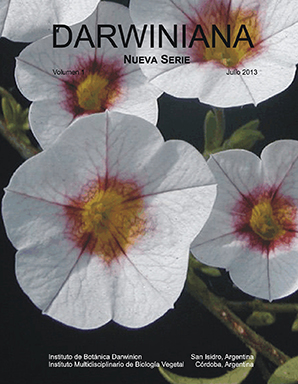Exploitation of plant species in northern Patagonia: Cueva Huenul 1 archaeobotanical record (Neuquén Province, Argentina)
DOI:
https://doi.org/10.14522/darwiniana.2013.11.496Keywords:
Hunter-gatherers, Lagenaria, Neuquén, plant remains, ProsopisAbstract
We present the analysis of plant remains recovered from the archaeological site Cueva Huenul 1, Neuquén Province, Argentina, which provides new insights on the timing of peopling, environment exploitation and use of plant resources. The chronological sequence of the site extends from the Pleistocene-Holocene transition to recent times. The archaeological remains might have been deposited by societies with a hunter-gatherer subsistence. The recovered taxa correspond to native wildlife, which are consistent with the landscape of northern Patagonia, as well as to one domesticated taxon (Lagenaria sp.). The assemblage is studied from a taphonomic perspective to assess the influence of anthropic and natural processes of formation. Finally, these results were integrated with other archaeological and palaeoecological data, allowing a first assessment of human subsistence at the scale of the site. The spatial expansion of this study will provide the basis to study the variation in human subsistence across different environmental settings in northwestern Patagonia.
Published
How to Cite
Issue
Section
License

Starting on 2012, Darwiniana Nueva Serie uses Licencia Creative Commons Atribución-NoComercial 2.5 Argentina .






